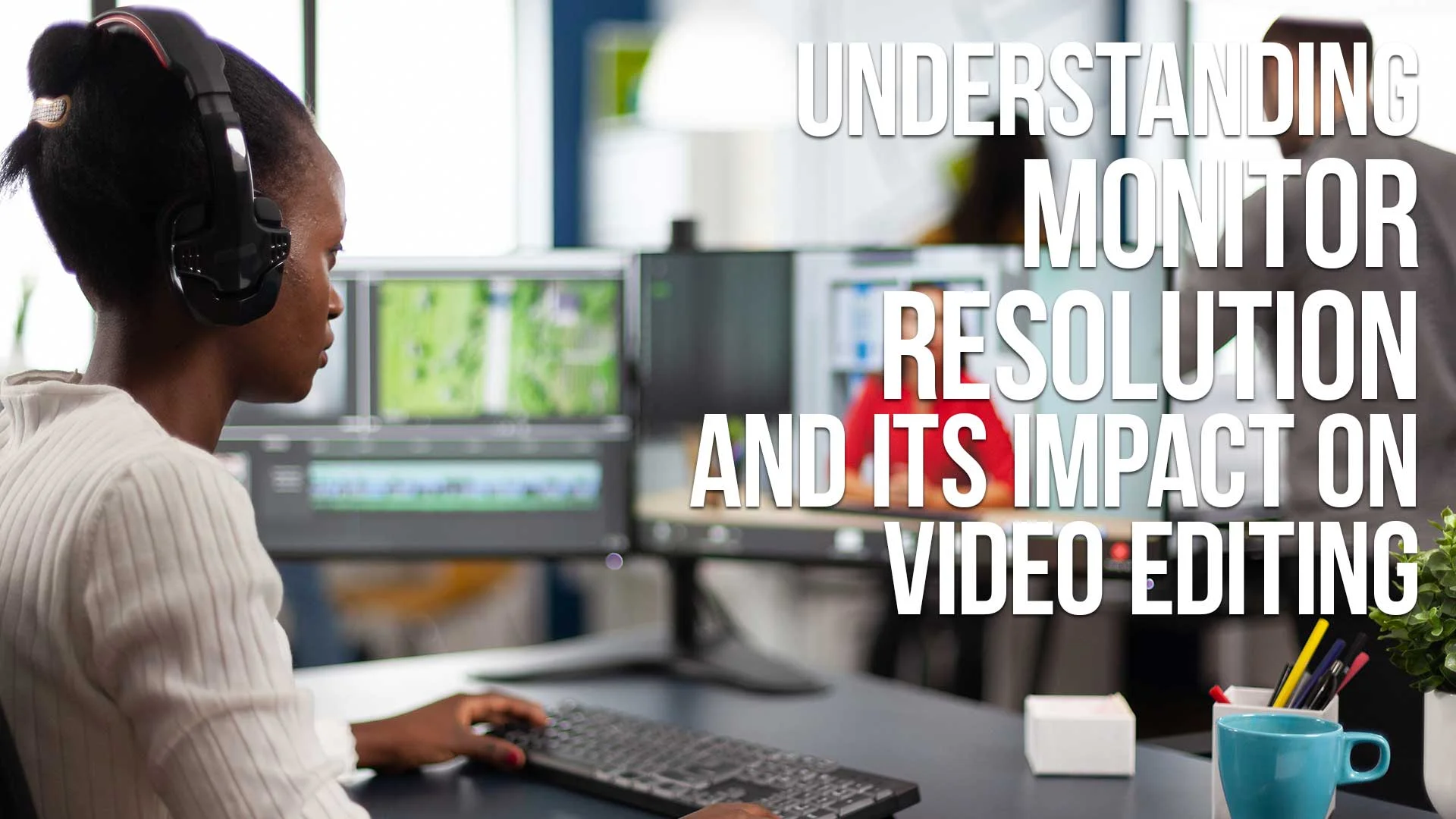Parent Article: The Best Monitors for Video Editing
When it comes to video editing, having a high-quality monitor with the appropriate resolution is crucial.
Understanding the impact of monitor resolution on video editing can help you create better quality content.
In this article, we will explore everything you need to know about monitor resolution and its impact on video editing.
Table of Contents
- What Is Monitor Resolution?
- How Does Monitor Resolution Affect Video Editing?
- The Impact Of High Resolution Monitors On Video Editing
- How To Choose The Right Monitor For Video Editing
- Resolution
- Color Accuracy
- Screen Size
- Common Monitor Resolutions For Video Editing
- 1080P
- 1440P
- 4K
- Latest Trends And Technological Advancements In Monitor Technology
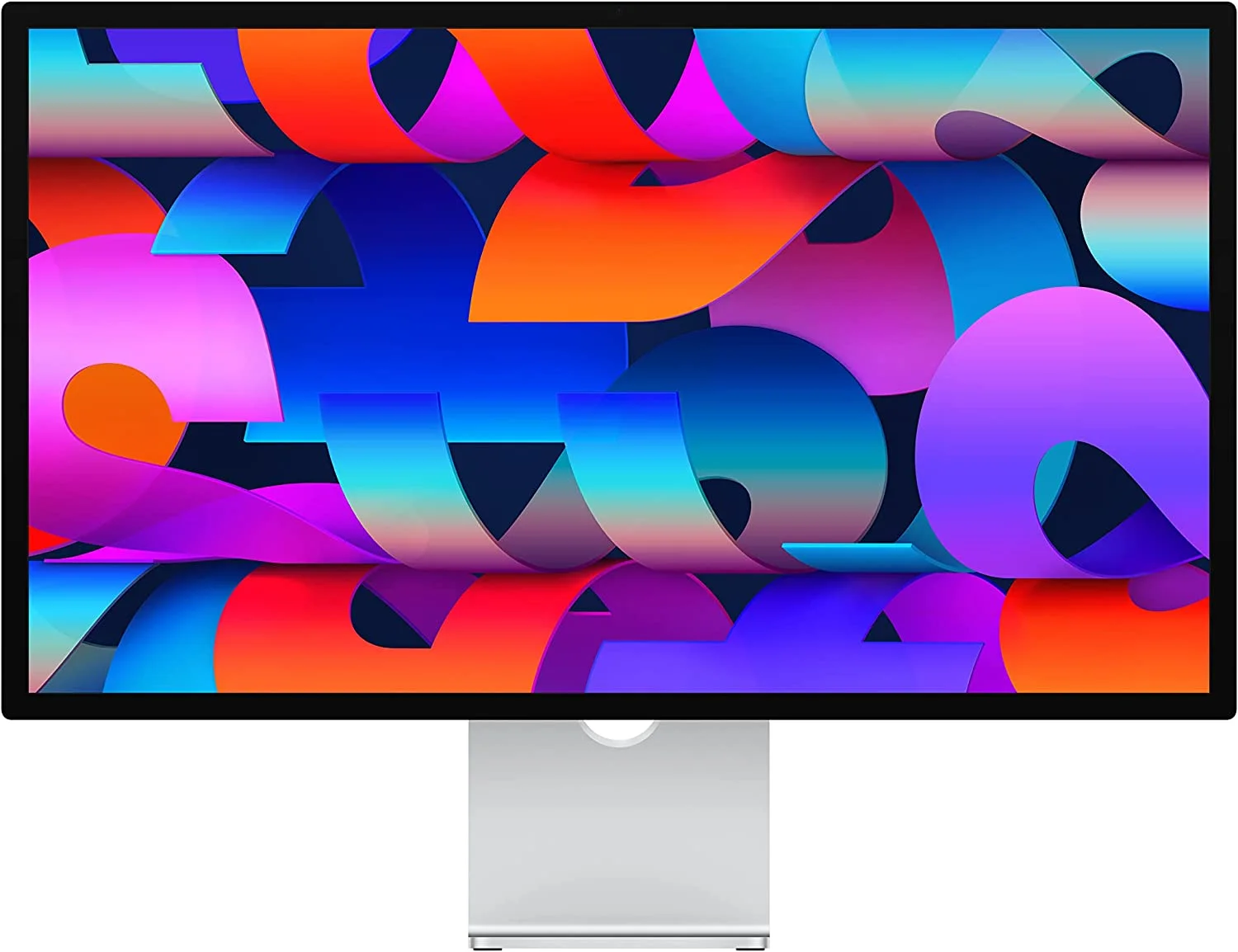
What is Monitor Resolution?
Monitor resolution refers to the number of pixels displayed on a screen. It is measured in horizontal and vertical pixels.
The more pixels on the screen, the higher the resolution.
This translates to a higher quality image and better video editing capabilities.
How Does Monitor Resolution Affect Video Editing?
The resolution of your monitor plays a significant role in the quality of your video editing.
A monitor with a low resolution will have a lower pixel density, making it harder to see details in your video. This can lead to mistakes in color grading, and it can be harder to fine-tune your footage.
A high-resolution monitor, on the other hand, will have a higher pixel density, allowing you to see details more clearly and make more precise edits.
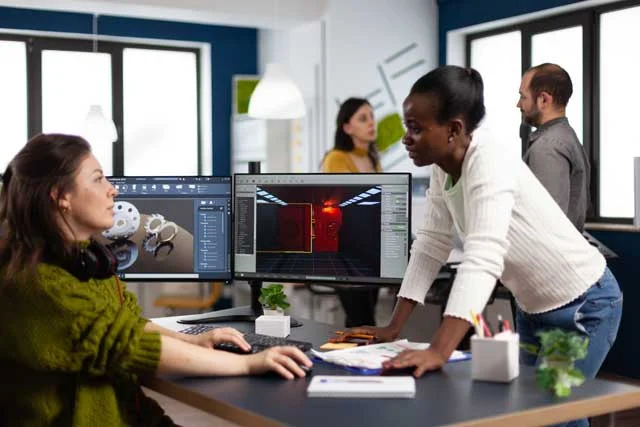
The Impact of High Resolution Monitors on Video Editing
A high-resolution monitor is essential for video editors who want to produce high-quality videos.
With a high-resolution monitor, you can see every detail in your footage, making it easier to color grade and edit your footage.
A monitor with a resolution of 4K or higher is recommended for video editing. This will give you the necessary pixel density to edit your footage precisely.
How to Choose the Right Monitor for Video Editing
Choosing the right monitor for video editing can be overwhelming. There are many factors to consider, including resolution, color accuracy, screen size, and more.
Here are some tips to help you choose the right monitor for your video editing needs:
Resolution
As mentioned earlier, a high-resolution monitor is essential for video editing. Aim for a resolution of at least 4K.
Color Accuracy
Color accuracy is crucial for video editing. Look for a monitor with an IPS panel for the best color accuracy.
Screen Size
The size of your monitor is a personal preference. However, a larger screen can help you see details more clearly.
Common Monitor Resolutions for Video Editing
There are several common monitor resolutions for video editing. Here are the most popular:
1080p
This is the minimum resolution you should consider for video editing. However, it is not recommended as it lacks the necessary pixel density for fine-tuning your footage.
1440p
This is a good option for video editing, but it still lacks the necessary pixel density for high-quality editing.
4K
A 4K monitor is the best option for video editing. It has the necessary pixel density to see details clearly and make precise edits.
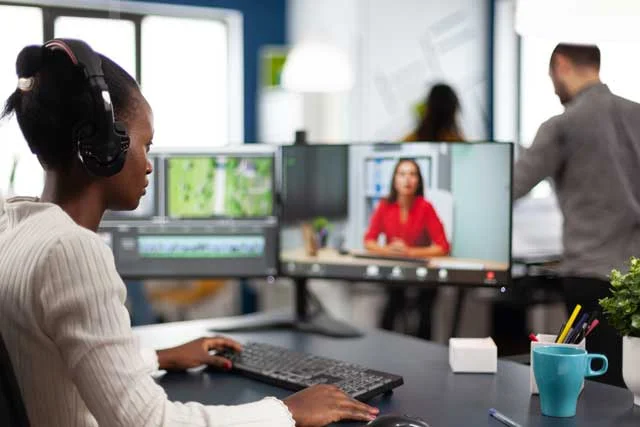
Latest Trends and Technological Advancements in Monitor Technology
OLED and QD-OLED Displays
- OLED Gaming Monitors: 2023 witnessed the debut of OLED gaming monitors, offering exceptional image quality with perfect black levels, enhancing the immersion in cinematic games.
- QD-OLED Technology: The 2023 Samsung QD-OLED includes HyperEfficient Electroluminescence for brighter screens and IntelliSense AI (v2.0) for extended lifespan and reduced power consumption.
- Color Representation: QD-OLED displays provide over 90% coverage of the BT.2020 color space and 99% of the DCI-P3 color space, allowing content creators to convey a comprehensive range of colors.
- Eye Care Standards: The 2023 QD-OLED 34” monitor meets SGS and TÜV Rheinland Eye Care Display standards, optimized for low harmful blue light emission.
High Refresh Rates
- 500Hz Gaming Monitors: Alienware's 500Hz display marks a significant advancement, especially beneficial for video editors and competitive gamers playing fast-paced titles.
High-Resolution and Color Accuracy
- 4K Resolution: Monitors like the BenQ PhotoVue SW272U offer 4K resolution with comprehensive color space coverage, crucial for high-quality video editing.
- Built-in Calibration: Monitors such as the Eizo ColorEdge CG319X feature built-in automatic color calibration, ensuring consistent color accuracy.
Ultrawide and Portable Options
- Ultrawide Monitors: The LG 40WP95C, with a 5K2K resolution and a 21:9 aspect ratio, offers ample screen real estate, ideal for handling long video timelines.
- Portable Monitors: Devices like the Intehill U15NA 4K Portable Monitor are thin, lightweight, and offer high resolution and color accuracy, making them suitable for on-the-go editing.
Affordable Options
- Budget-Friendly Monitors: The Dell S2722QC provides a 4K resolution at a more affordable price, making it a viable option for those starting in video editing.
Key Considerations in Monitor Technology
- Display Size and Resolution: Personal preference and workspace limitations play a role in choosing the right size. 4K resolution is becoming a standard for detailed work.
- Screen Technology: IPS (in-plane switching) panels are recommended for their color performance and consistent brightness.
- Color Accuracy: Look for monitors with high color gamut coverage, especially in the DCI-P3 color space for video editing.
- Connectivity Options: Consider the variety of connectivity options like HDMI, Thunderbolt, DisplayPort, and USB-C for seamless integration with your devices.
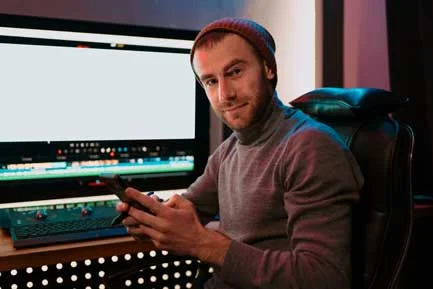
Video Monitor Resolution Frequently Asked Questions
What is the minimum resolution required for video editing?
The minimum resolution required for video editing is 1080p. However, this resolution lacks the necessary pixel density for fine-tuning your footage.
What resolution is recommended for video editing?
A resolution of at least 4K is recommended for video editing. This will give you the necessary pixel density to edit your footage precisely.
What is color accuracy, and why is it important for video editing?
Color accuracy refers to how accurately a monitor displays colors. It is crucial for video editing as it ensures that the colors in your video are true to life.
What is an IPS panel, and why is it important for video editing?
An IPS panel is a type of LCD panel that offers the best color accuracy and viewing angles. It is important for video editing as it ensures that the colors in your video are true to life.
Does Screen Size Matter for Video Editing?
Screen size is a personal preference when it comes to video editing. However, a larger screen can help you see details more clearly, which can be especially helpful when editing high-resolution footage. A larger screen also allows you to have more screen real estate to work with multiple windows and applications simultaneously.
Can I Use a TV for Video Editing?
While it is possible to use a TV for video editing, it is not recommended. TVs are designed for watching content, not for color accuracy or fine-tuning footage. TVs also have higher input lag, which can make it harder to make precise edits.
What is Input Lag?
Input lag is the delay between when you perform an action and when it is displayed on the screen. High input lag can make it difficult to make precise edits, as there can be a delay between when you make an adjustment and when you see the results on the screen.
Can I Use a Laptop for Video Editing?
While it is possible to use a laptop for video editing, it is not recommended. Laptops typically have smaller screens and lower processing power than desktop computers, which can make it harder to edit high-resolution footage.
Do I Need a Graphics Card for Video Editing?
A graphics card is recommended for video editing, especially when working with high-resolution footage. A graphics card can help speed up the rendering and playback of your footage, making the editing process smoother and more efficient.
Can I Use Multiple Monitors for Video Editing?
Using multiple monitors for video editing can be helpful, as it allows you to have more screen real estate to work with multiple windows and applications simultaneously. However, it is important to make sure that all of your monitors have the same resolution and color accuracy to ensure that your footage looks consistent across all screens.
How Often Should I Calibrate My Monitor?
It is recommended to calibrate your monitor at least once a month to ensure that your colors are accurate. However, if you are working on a project that requires color accuracy, you may want to calibrate your monitor more frequently.
What is the Difference Between a TN Panel and an IPS Panel?
A TN panel is a type of LCD panel that offers faster response times and higher refresh rates than an IPS panel. However, TN panels have poor color accuracy and viewing angles. An IPS panel, on the other hand, offers the best color accuracy and viewing angles, making it ideal for video editing.
Can I Edit 4K Video on a 1080p Monitor?
While it is possible to edit 4K video on a 1080p monitor, it is not recommended. A 1080p monitor lacks the necessary pixel density to see details in your footage, making it harder to make precise edits. It is recommended to use a 4K monitor for editing 4K footage.
What is the Best Monitor for Video Editing?
The best monitor for video editing depends on your specific needs and budget. However, a 4K monitor with an IPS panel and good color accuracy is recommended for high-quality video editing.
Conclusion
Monitor resolution plays a significant role in the quality of your video editing. A high-resolution monitor with good color accuracy and an IPS panel is essential for producing high-quality videos. When choosing a monitor for video editing, aim for a resolution of at least 4K and make sure that it has good color accuracy and an IPS panel. With the right monitor, you can create stunning videos that will impress your audience.

About the Author
Joseph Nilo has been working professionally in all aspects of audio and video production for over twenty years. His day-to-day work finds him working as a video editor, 2D and 3D motion graphics designer, voiceover artist and audio engineer, and colorist for corporate projects and feature films.
Video Monitors Related Posts
The Best Monitors Compatible with MacBook Pro
Best Monitors for Video Editing
Understanding Monitor Resolution and Its Impact on Video Editing
Calibrating Your Video Editing Monitor for Optimal Color Accuracy
The Benefits of Dual-Monitor Setups for Video Editing
Future-Proofing Your Video Editing Setup: Choosing a Monitor with Upgrade Potential
Minimizing Eye Strain and Fatigue with the Right Video Editing Monitor
How to Choose the Right Video Editing Monitor for Your Needs
What to Look for in HDR-Capable Video Editing Monitors
The Importance of Color Accuracy in Video Editing Monitors
IPS vs. TN Panels: Which is Better for Video Editing Monitors?
Video Editing Related Posts
Adobe Creative Cloud for Video Editing
Top 10 Video Editing Software for Mac
The Benefits of Dual-Monitor Setups for Video Editing
How to Choose the Right Video Editing Monitor for Your Needs
Best Monitors for Video Editing
Best Video Editing Software in 2023
Best Mac for Video Editing in 2023
(Almost) 50 Mistakes Every New Video Producer Makes
Breakthrough AI Tools: Elevate Your Video Production Game!
- What Is Monitor Resolution?
- How Does Monitor Resolution Affect Video Editing?
- The Impact Of High Resolution Monitors On Video Editing
- How To Choose The Right Monitor For Video Editing
- Resolution
- Color Accuracy
- Screen Size
- Common Monitor Resolutions For Video Editing
- 1080P
- 1440P
- 4K
- Latest Trends And Technological Advancements In Monitor Technology
Video Monitors Related Posts
The Best Monitors Compatible with MacBook Pro
Best Monitors for Video Editing
Understanding Monitor Resolution and Its Impact on Video Editing
Calibrating Your Video Editing Monitor for Optimal Color Accuracy
The Benefits of Dual-Monitor Setups for Video Editing
Future-Proofing Your Video Editing Setup: Choosing a Monitor with Upgrade Potential
Minimizing Eye Strain and Fatigue with the Right Video Editing Monitor
How to Choose the Right Video Editing Monitor for Your Needs
What to Look for in HDR-Capable Video Editing Monitors
The Importance of Color Accuracy in Video Editing Monitors
IPS vs. TN Panels: Which is Better for Video Editing Monitors?
Video Editing Related Posts
Adobe Creative Cloud for Video Editing
Top 10 Video Editing Software for Mac
The Benefits of Dual-Monitor Setups for Video Editing
How to Choose the Right Video Editing Monitor for Your Needs
Best Monitors for Video Editing
Best Video Editing Software in 2023
Best Mac for Video Editing in 2023
(Almost) 50 Mistakes Every New Video Producer Makes
Breakthrough AI Tools: Elevate Your Video Production Game!
